Discovering effective antifungal drugs on durian trees to protect crops and increase productivity. The best solution for mold problems.
Antifungal Medicine on Durian Trees
Durian trees provide high economic value and therefore require special care, as they are susceptible to various fungal diseases. To maintain the health and productivity of durian trees, using fungicides is crucial. These fungicides not only treat existing fungal infections but also play a preventive role, protecting the trees from future fungal attacks. Sataka provides essential information on effective fungicides, their proper use, and preventive measures to help you care for your durian trees in the best way possible.
1. Effective Fungicides for Durian Trees
To protect durian trees from fungal diseases, using effective fungicides is essential. Below are three prominent fungicides from Sataka that you can consider to safeguard your durian trees:
1.1 Difenoconazole
Difenoconazole is a standout active ingredient in fungicides, known for its ability to inhibit the development of fungal pathogens on durian trees. It works by suppressing enzymes necessary for fungal growth, protecting the trees from common fungal diseases. This fungicide is often used to treat diseases caused by Fusarium, Aspergillus, and other fungi. For optimal results, follow the manufacturer’s instructions on dosage and application.
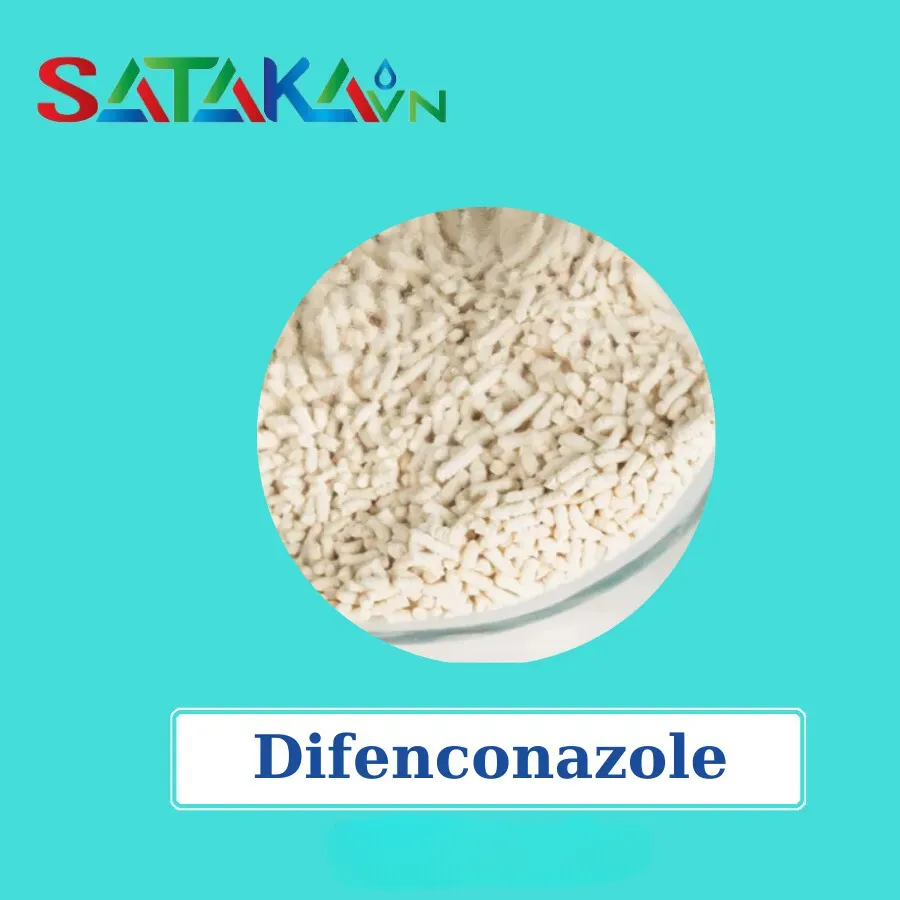
Difenoconazole granules
1.2 Azoxystrobin
Azoxystrobin is a powerful active ingredient effective against a wide range of fungal diseases on durian trees. It works by disrupting the respiration process of fungi, reducing their ability to spread and grow. Azoxystrobin is particularly effective in treating diseases like leaf spot and powdery mildew. To use this fungicide effectively, adhere to the manufacturer's instructions and maintain appropriate intervals between applications to avoid resistance issues.
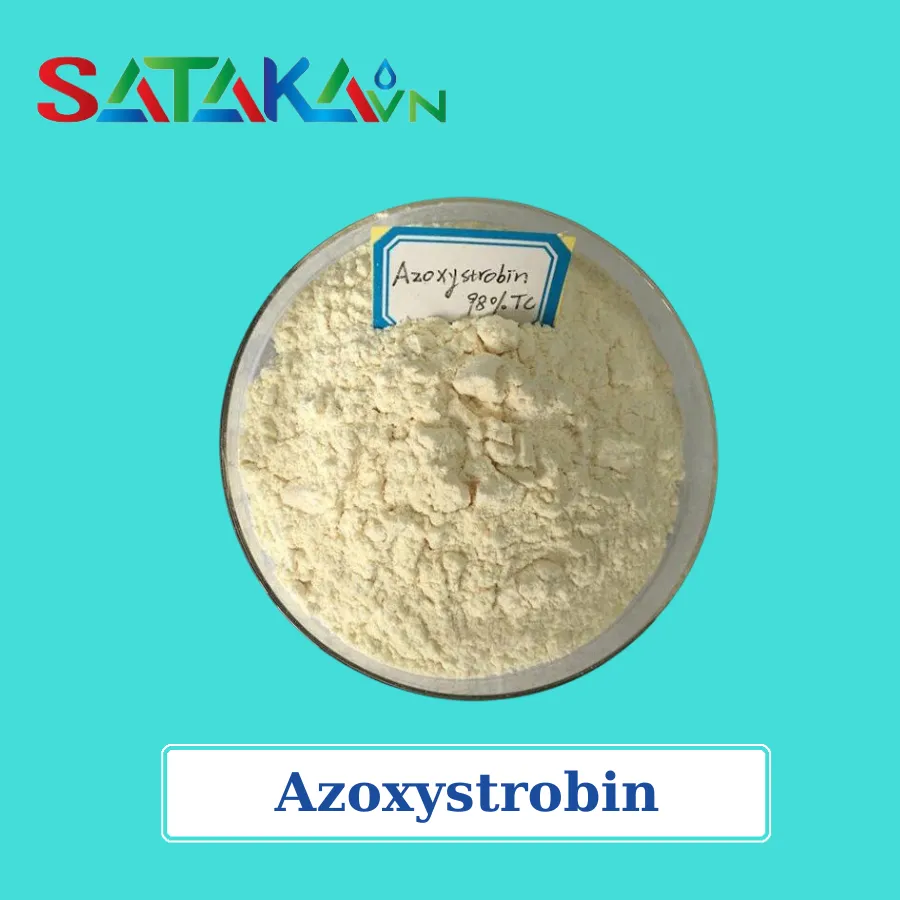
Azoxystrobin powder
1.3 Propiconazole
Propiconazole is another widely used active ingredient in fungicides. It works by interfering with the synthesis of ergosterol in fungal cell membranes, preventing their growth and spread. Propiconazole is commonly used to treat diseases like root rot and leaf-related fungal infections in durian trees. For maximum effectiveness, follow application guidelines carefully and avoid overuse.
Using these fungicides not only protects durian trees from fungal diseases but also helps maintain their health and productivity. Choose the right product and apply it correctly to ensure the best outcomes in controlling fungal diseases.
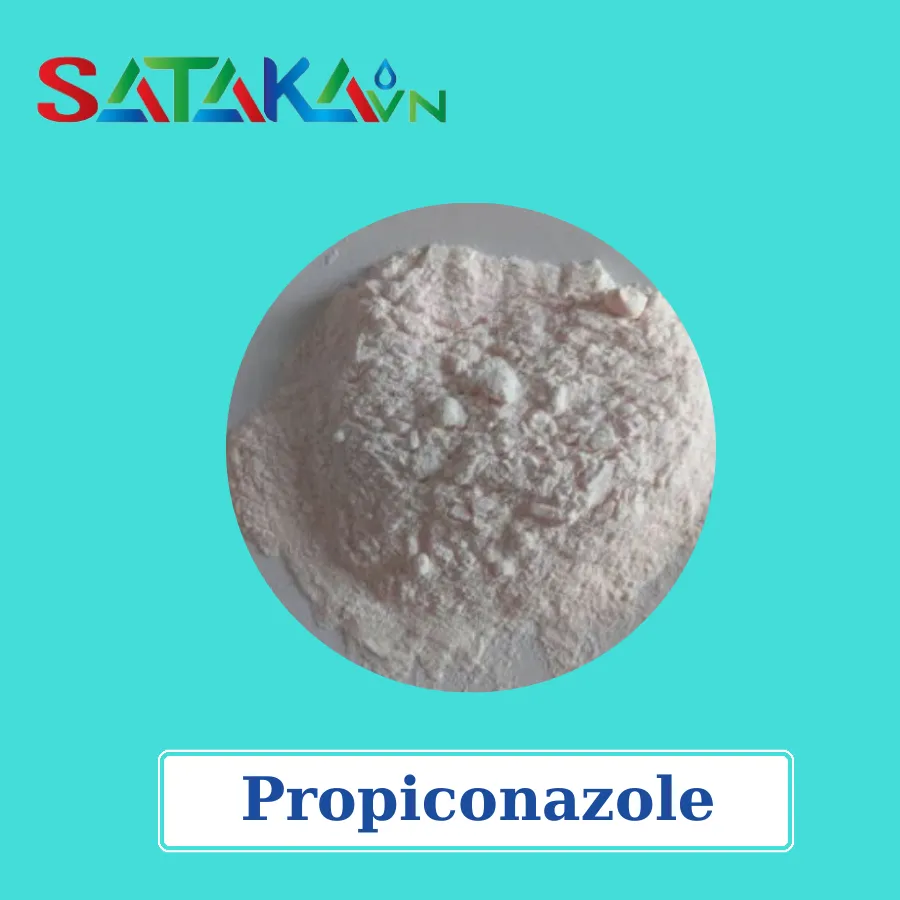
Propiconazole powder
2. Common Fungal Diseases in Durian Trees
Durian trees often face various fungal diseases. Here is a list of common fungal diseases and their symptoms:
-
Leaf spot disease
- Symptoms: Brown, circular spots on leaf surfaces; leaves may wilt and fall.
- Treatment: Use fungicides like Difenoconazole for effective control.
-
Root rot disease
- Symptoms: Decayed root systems, wilting trees, yellowing leaves.
- Treatment: Apply Propiconazole to prevent fungal development and improve root health.
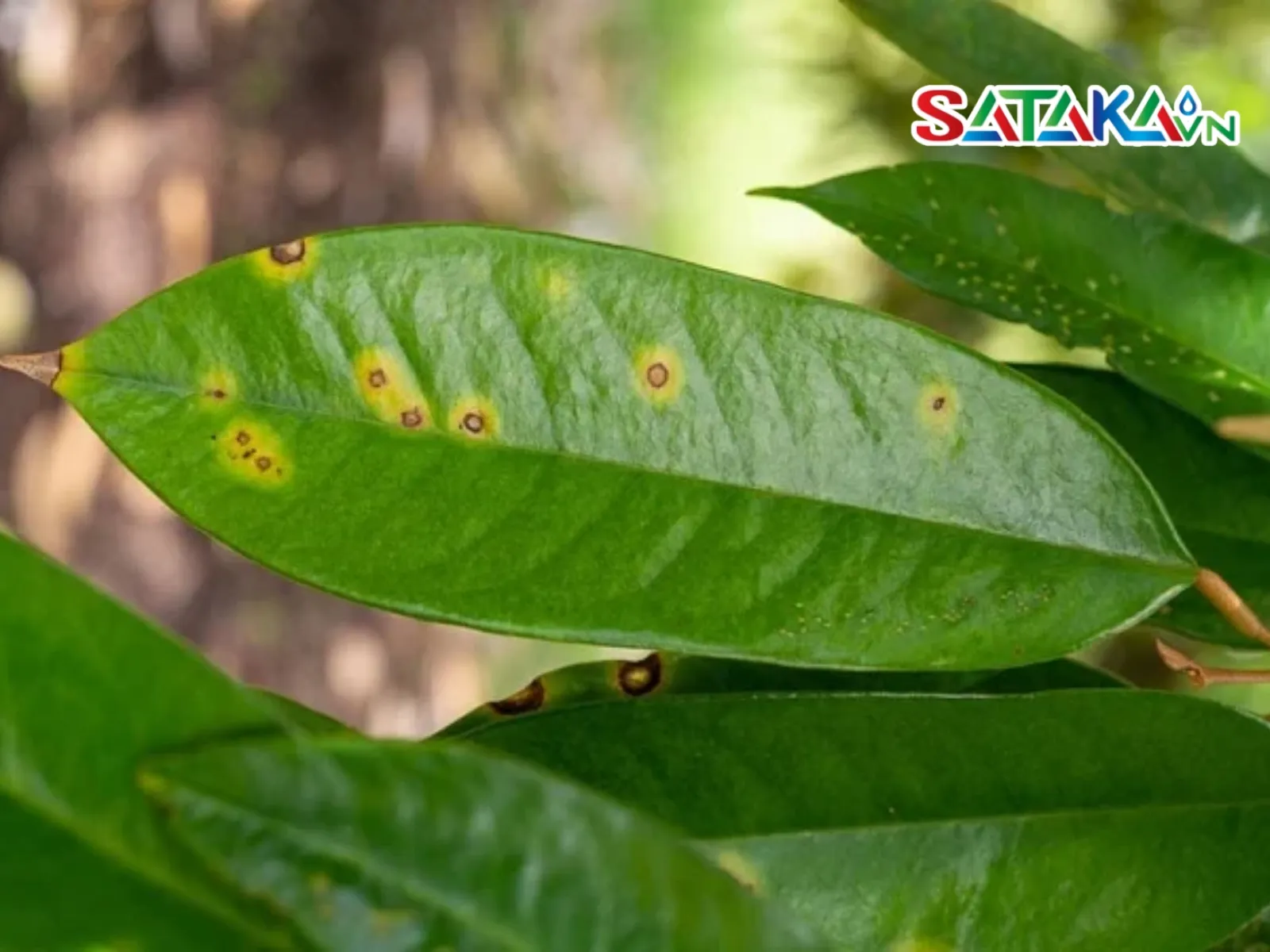
Durian leaves have leaf spot disease
-
Powdery mildew
- Symptoms: White powdery coating on leaves, branches, and fruits; reduced photosynthesis and fruit damage.
- Treatment: Use Azoxystrobin to control the spread and growth of the disease.
-
Fruit rot disease
- Symptoms: Soft, foul-smelling, and rotting durian fruits.
- Treatment: Apply suitable fungicides and take preventive measures to avoid infection.
3. Causes of Fungal Diseases in Durian Trees
Fungal diseases in durian trees can arise from several factors. Below are the primary causes:
1. Weather Conditions
- High humidity: Wet environments provide ideal conditions for fungal growth. When air humidity increases, fungal spores easily thrive and spread on durian trees.
- Frequent rainfall: Regular rain keeps tree surfaces wet, creating a conducive environment for fungi. Prolonged rainfall increases soil and leaf moisture, promoting fungal development.
- High temperatures: High temperatures combined with humidity accelerate fungal growth, making durian trees more vulnerable to infections.
2. Garden Hygiene
- Overcrowded planting: Trees planted too closely hinder air circulation, causing moisture accumulation and fungal growth.
- Poor garden hygiene: Neglecting to clean fallen leaves and organic debris creates a favorable environment for fungi.
- Contaminated water sources: Polluted water can carry fungal spores, increasing the risk of infection.
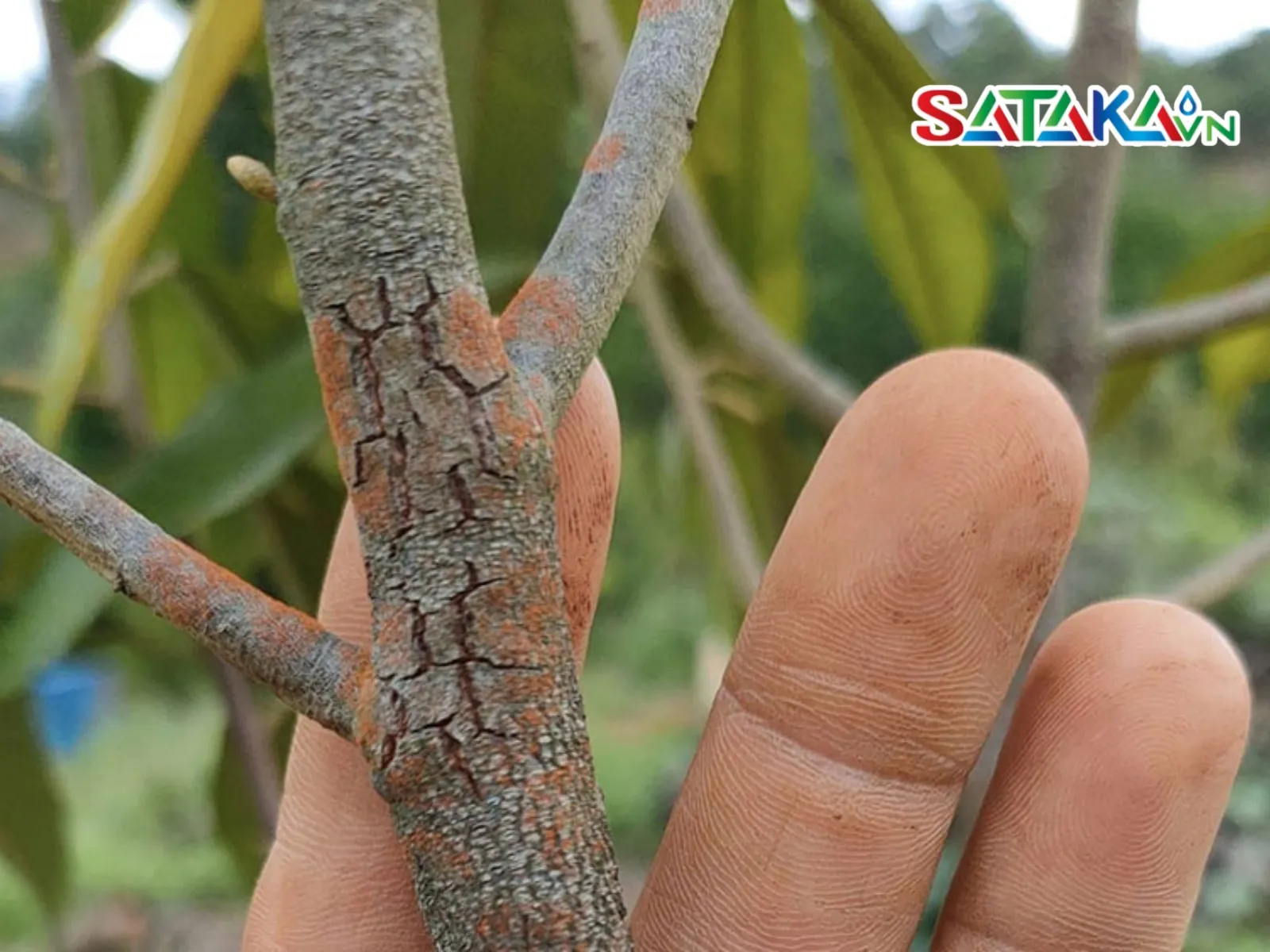
Transplant infected durian
3. Pests
- Insect damage: Pests can damage leaves, branches, and fruits, providing entry points for fungi. Wounds caused by pests are highly susceptible to fungal infections.
4. Tree Variety
- Disease resistance: Some durian varieties have weaker resistance to diseases. Selecting disease-resistant varieties can help reduce fungal disease risks.
4. Effective Use of Fungicides
To ensure optimal results when using fungicides for durian trees, follow these detailed guidelines:
1. Dosage
- Specify the appropriate dosage for each tree and growth stage: Each fungicide has specific dosages that should be adhered to for effectiveness and safety. For instance, the dosage for young trees may differ from mature ones. Carefully read the product label to determine the correct dosage and adjust based on the tree’s growth stage.
2. Application Timing
-
Identify the most effective application times:
- Post-harvest: Spraying fungicides after harvest eliminates remaining spores on trees and soil, preparing for the next season.
- Pre-flowering: Applying fungicides before flowering protects the blooms from early-stage fungal infections.
- Upon disease detection: If symptoms of fungal disease are observed, apply fungicides immediately to control and stop disease spread.
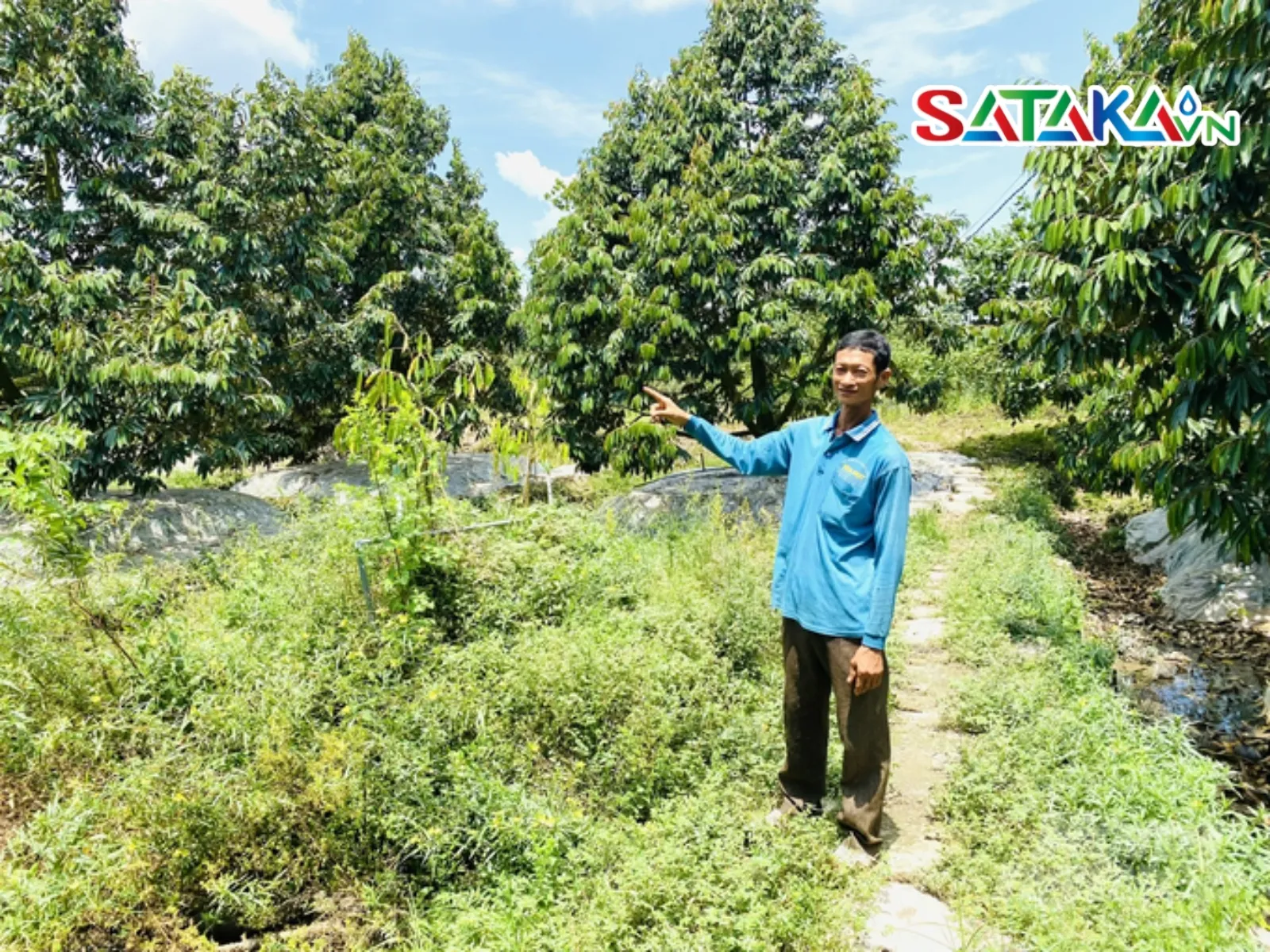
Check the disease of the durian tree to adjust the spray dosage
3. Spraying Method
- Mixing instructions: Prepare fungicides according to the manufacturer’s specified ratios. Use clean water and ensure the product is thoroughly dissolved.
-
Spraying tips:
- Spray evenly: Cover all parts of the durian tree, including the undersides of leaves and branches.
- Avoid flowers and fruits: During flowering or fruiting stages, avoid direct contact with flowers and fruits to preserve product quality.
4. Safety Precautions
- Wear protective gear: Use masks and gloves to protect your respiratory system and skin.
- Use additional protection: Wear goggles and chemical-resistant clothing if needed.
- Clean thoroughly: Wash hands and change clothes after spraying to remove any fungicide residues.
5. Preventing Fungal Diseases in Durian Trees
To prevent fungal diseases in durian trees, implement the following measures:
1. Garden Hygiene
- Prune and shape canopies: Improve air circulation in the garden.
- Collect fallen leaves: Remove fallen leaves and organic debris to reduce fungal spread.
- Eliminate infection sources: Dispose of infected tree parts to stop fungal transmission.
2. Crop Rotation
- Avoid continuous durian planting in one area: Rotate crops to reduce the buildup of fungal spores in the soil.
3. Choose Disease-Resistant Varieties
- Select durian varieties with high disease resistance to enhance durability and reduce fungal risks.
4. Nutritional Supplements
- Balanced fertilization: Supply balanced fertilizers to ensure adequate nutrients for the trees.
- Provide essential nutrients: Ensure durian trees receive all necessary nutrients to maintain health and disease resistance.
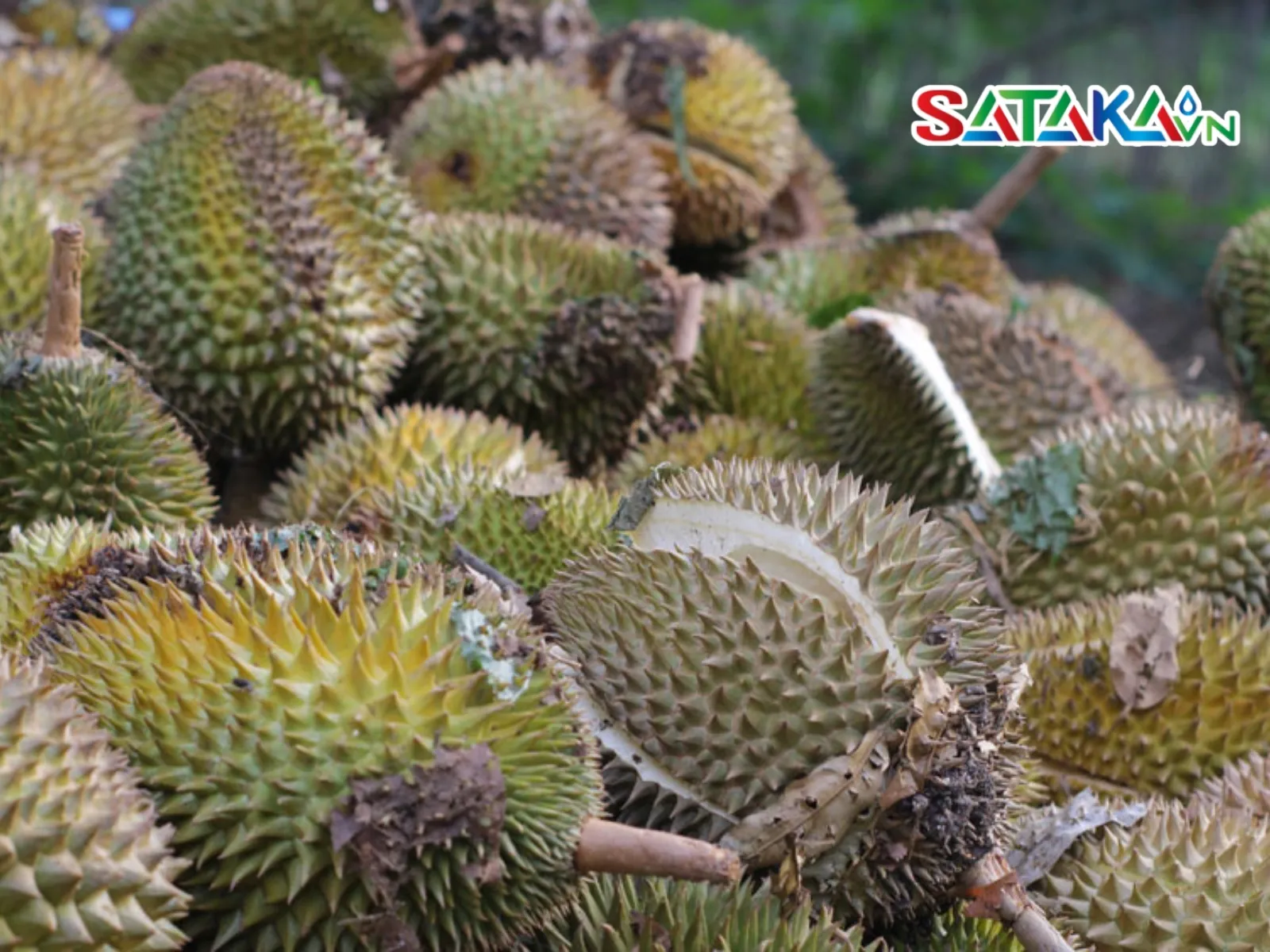
How to prevent fungal diseases on durian trees
By adopting preventive measures and using fungicides properly, you can protect durian trees from harmful fungal diseases and maintain their healthy growth. For the best results in treating and preventing fungal diseases, choose quality products from reputable suppliers. Sataka is committed to providing effective and reliable chemical materials to assist you in durian tree care. Contact us via hotline 0856555585 today to learn more about our products and solutions tailored to your needs!






